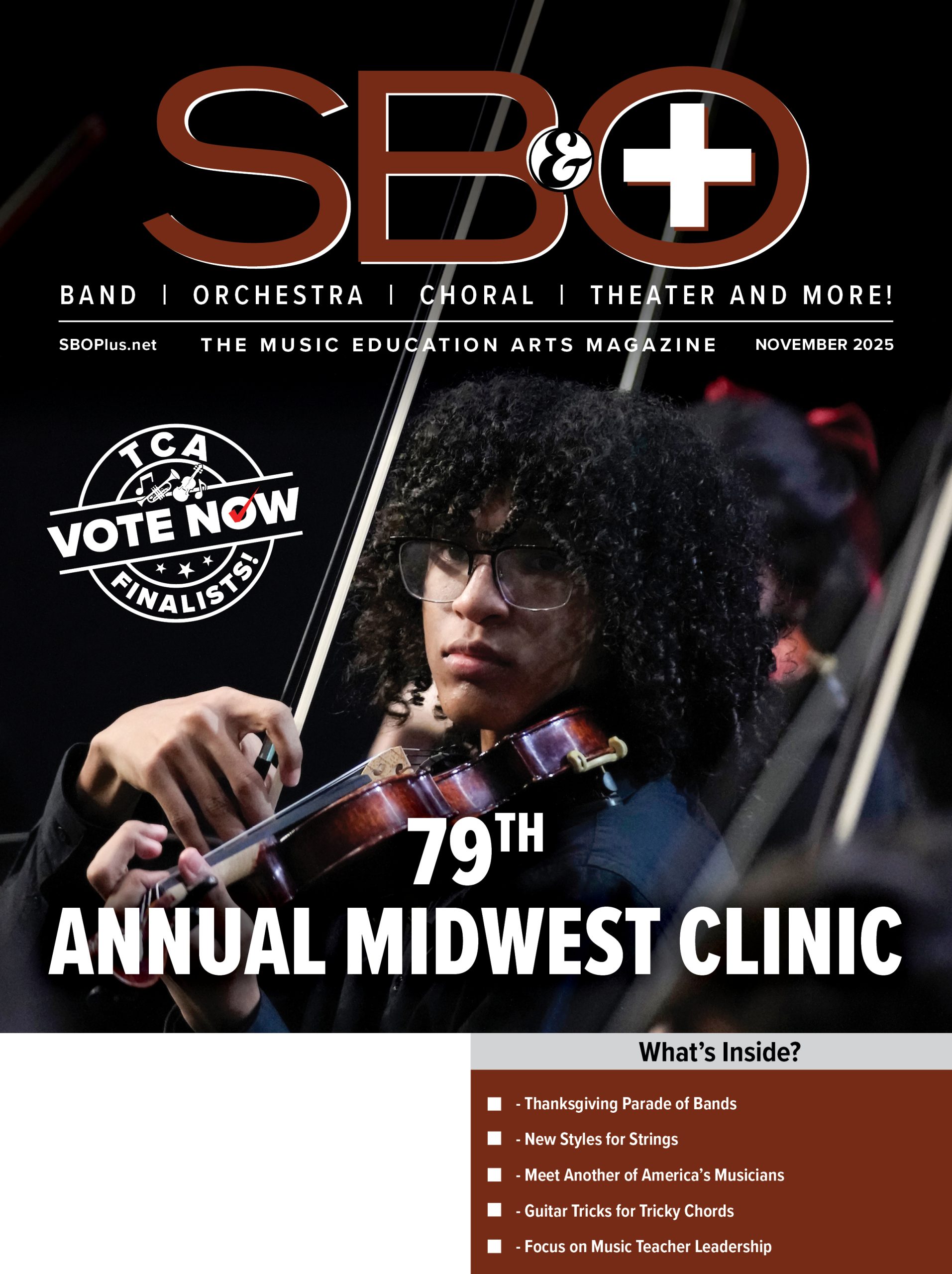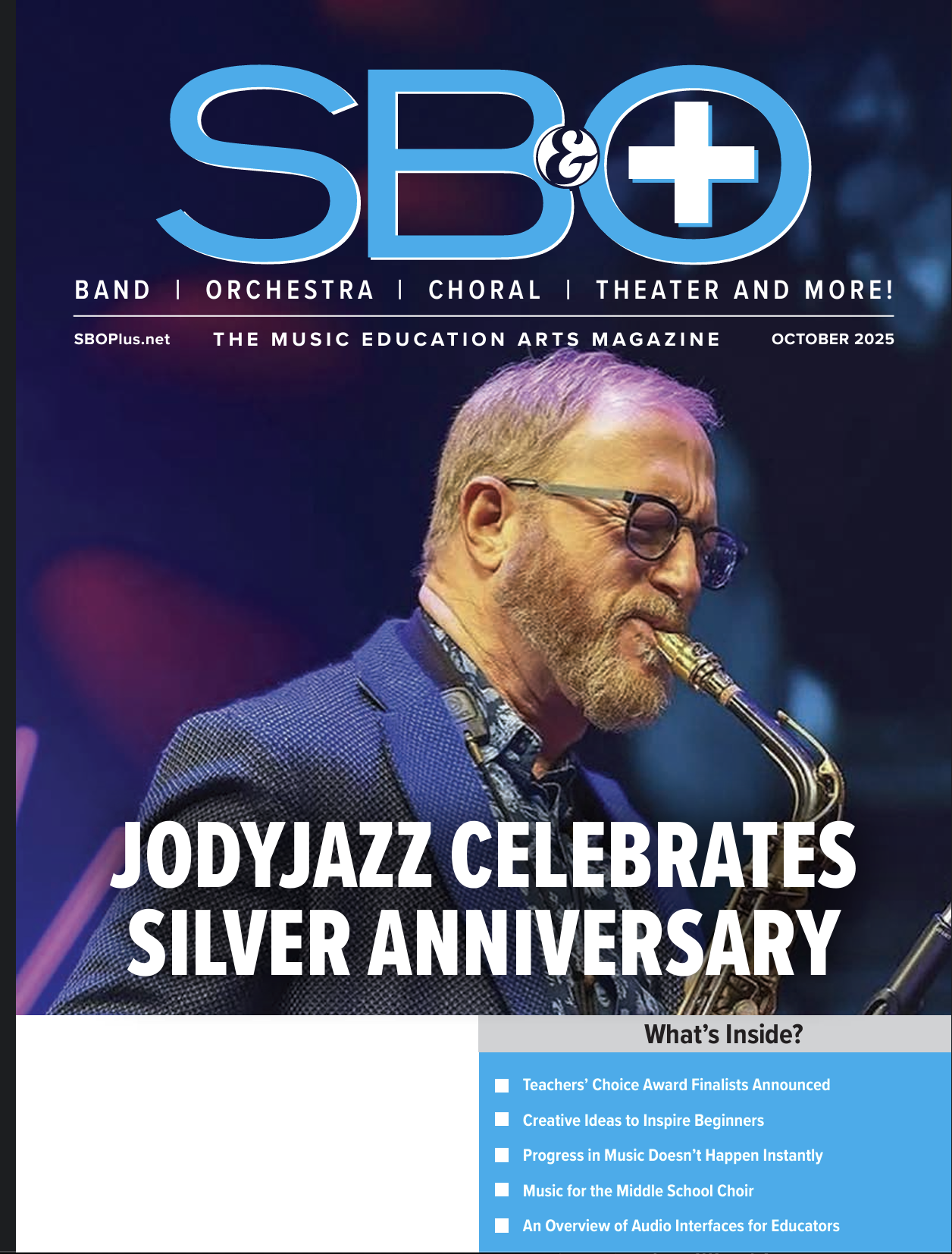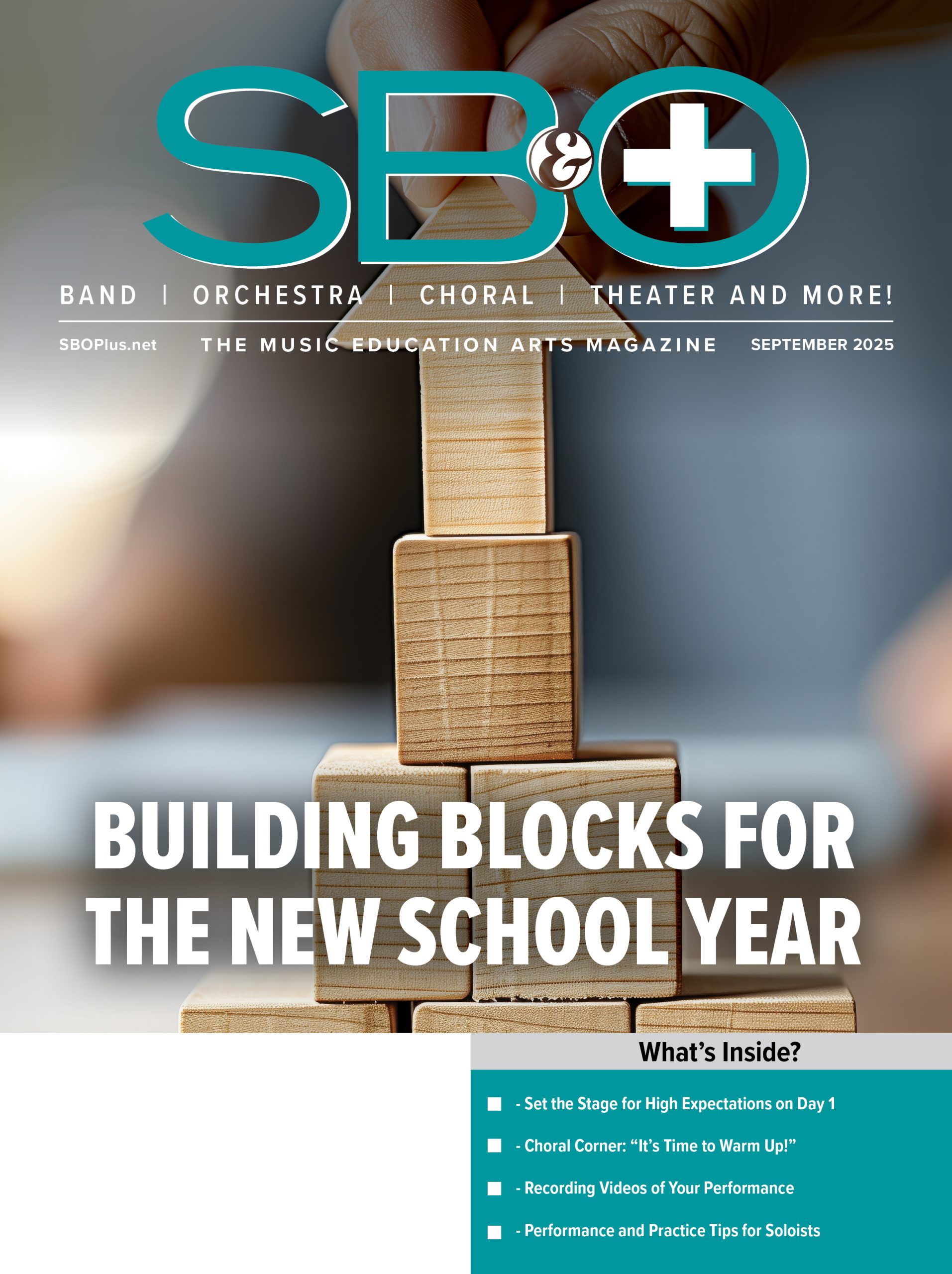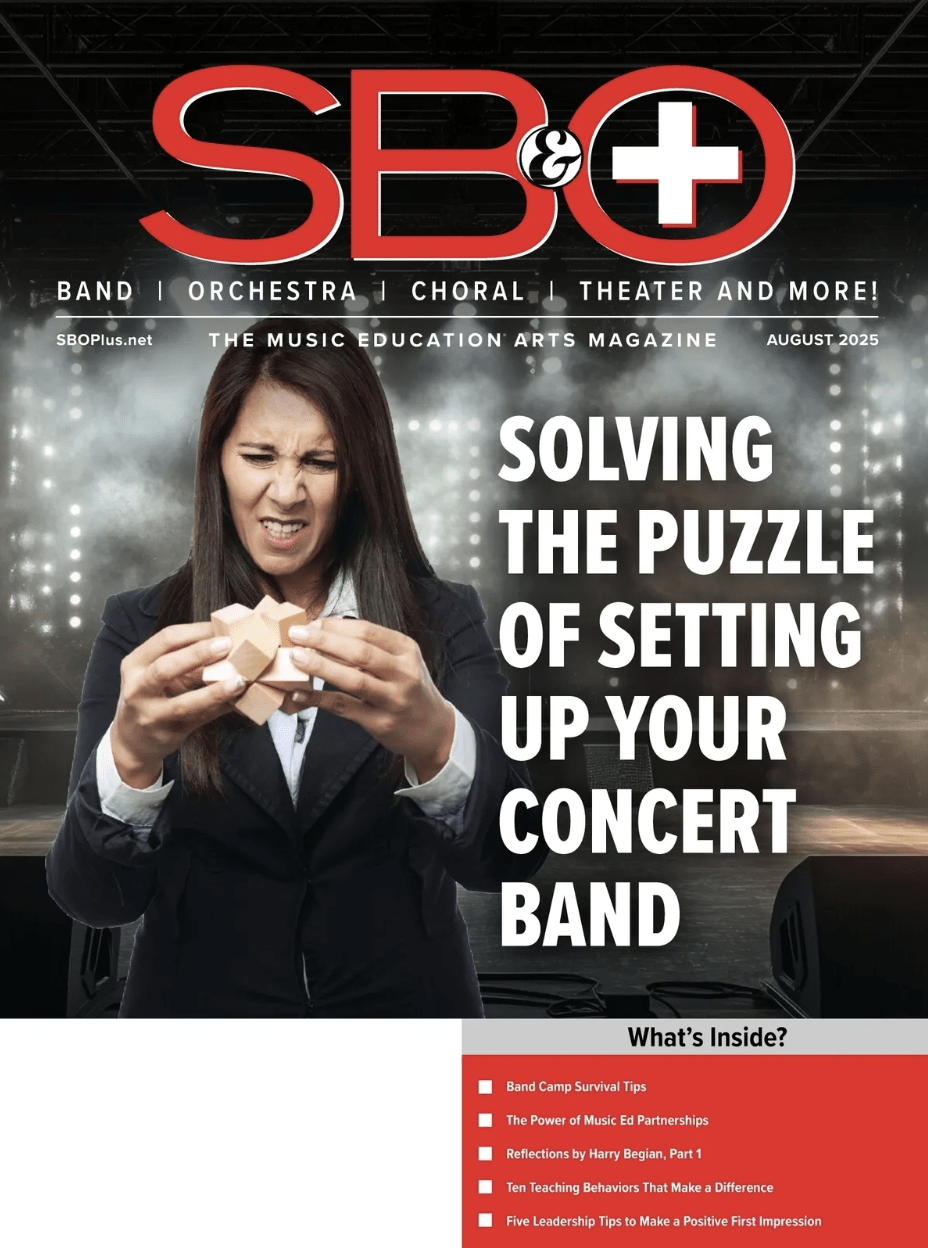It is with great honor that I write to a community of choral directors, the gatekeepers of many young careers. As you probably already know, the musical aspirations of many members of your chorus fall outside of the realm of classically-based music, including musical theater or other forms of popular music. The aesthetic needed for these genres can often be in opposition to the aesthetic of what the choir needs. Must these needs be exclusive or can they coexist? I firmly believe they can exist harmoniously, and to that point, let us examine some of the technical aspects of singing in popular music for both boys and girls.
One exercise that starts creating the type of coordination needed for both traditional and modern choral styles is known as the pharyngeal voice, which dates back to the Bel Canto period, where it was called, “Voce Firingea.” For those who are unfamiliar with it, the pharyngeal voice can initially seem foreign and strange. However, it can serve as the missing link between pop and classical-oriented vocal studies.
When taking on a role in the school’s musical theater production or a solo in a more pop-oriented song, many younger female singers struggle with the ability to successfully connect out of chest voice. There is either not enough chest voice involved (lack of thyroarytenoid involvement), which makes it sound too heady for the style, or the overuse of chest voice, with too much air pressure (subglottal pressure) building up under the vocal cords, which leads to strain, pitch problems, and usually an uncoordinated flip into a falsetto-based head voice at c#5. It is the second manner of use that also creates vocal health issues for younger females that like to belt but in a potentially hazardous manner.
This condition of over-pressurized chest voice is also a common occurrence in young male singers. The lack of mixed voice in a male will also produce strain, and will severely limit their top range. A lot of younger males who have been classified as baritones or basses could actually blossom into tenors, once they find their mixed voice and connection into head.
What is the solution to this? The female singer needs to learn to mix the voice (at around B♭4) and then create a coordinated connection into head voice at around e5. When this happens the quality of the mix is much more chest dominated than in classical singing, and the head voice seamlessly blends with the chest voice. If this sounds a bit familiar, it is. You are really getting the female voice to coordinate more like a male’s. Male voices connect from chest to head without a break, if the middle or mixed voice is mastered. Females are capable of doing the same thing.
Male singers need to induce mixed voice at somewhere around D4-E♭4. When younger male singers try to sing something out of the classical realm, they usually start singing on the call of the voice (a polite term for yelling) because they are pulling pure chest up into the area where a mixed voice or connected head tone should be used. While this may be satisfying to the singer, it is not to the audience or to their vocal cords. The culprit of this is usually too much air pressure, and vowels that are going wide. Vowels (in the male and female voice) at the point where they are approaching mixed voice need to narrow, not widen. For example /o/ takes on a hint of /u/ with the end result sounding like /o/ the way it would be pronounced in Minnesota. This may sound odd to the singer, but to the audience, it sounds very speech like. Open vowels absolutely need to narrow as they come out of the chest. Narrower versions of open vowels promote vocal fold lengthening and thinning via cricothyroid involvement, balance the air pressure below and above the vocal cords, and realign the formants (pockets of acoustic strength in the overtone series) to make them sound speech like. Not only does this produce a well-balanced voice, it makes the text intelligible.
Once this is accomplished, the singer can then create different colors in the voice that fit the style or genre of the role or piece. This is accomplished by modifying the vocal tract in length and width. When the female singer has mastered this, even the more difficult high belt roles can be accomplished with ease, while not giving way to vocal issues such as laryngitis, a problem many younger female singers encounter when attempting to take on music that in some ways is contrary to their typical experience or training. When the male singer does this, genre hopping is very easy.
The sound of the pharyngeal voice is often described as bright, brassy, or witchy in nature. By imposing a “witchy” quality on voice and using phonemes such as /ne/ or /nae/, the female singer experiences a fully connected, acoustically strong sound from E♭3 to A♭5. The male voice can take this quality from their lowest note up to E♭5, or higher. The pharyngeal quality encourages a unique coupling of the vocal tract by encouraging the pharyngeal wall to assist in a longer vocal closed phase (the vocal folds staying adducted longer) and shaping the space above the folds to emphasize certain overtones to create a very loud, bright sound. This sound is very serviceable in rock, R&B, funk, and gospel, along with the higher belt roles. For other types of singing it is not as serviceable. However, by making slight adjustments in the vocal tract the singer can still keep the registration and firmness the pharyngeal voice creates in place while “warming” up the sound. This is created by using certain devices and exercises that help the larynx stay at a more neutral, or lowered position, whereas the pharyngeal voice encourages a slightly raised position. Initially the pharyngeal voice can prove confusing to the singer and listener not familiar with it.
After the presentation of a study on pharyngeal voice that I did at a Midwest Voice Conference, one attendee expressed her amazement and cognitive dissonance in a blog:
By some accounts, we’ve opened a can of worms and I can understand if it seems a bit strange to you. If I hadn’t heard it for myself, I’d have questions about it too, however, for our part, there was a demonstration later in the afternoon with a young soprano who has been coached using the pharyngeal voice and it was astounding to hear the steadiness, power and focus in her voice, with her head and chest voice connected seamlessly. The male voice works this way already and the female voice, using this method, could also be trained to have a fully connected head and chest voice.
I wasn’t trained using this technique, but with Bel Canto, the standard technique in conservatories and universities that has been used for hundreds of years to train singers of opera, art song, musical theater and those who want to engage in beautiful singing in general.
To go from what I knew to hearing what I heard took me aback and was puzzling as I tried to wrap my head around the concept and the sheer power of the sound at all times on any pitch. It’s like turning the fire hose on full blast.
For some footage of the pharyngeal voice on Youtube:
At this point, I am sure some readers are wondering how the approaches being discussed would then be used for singing in a choral setting. The singer needs to learn to decrease the closed phase in a vocal cycle to create a sound that is not as firm and pick up head resonance a bit lower in the voice, especially in the female voice. This is usually accomplished by adjustments in the vocal tract that have an impact on the vibration of the vocal folds and change the emphasis on which overtones are energized.
With the approaches described above, you have the ability to create very versatile singers who will not only be able to serve your needs in choir, but also help them towards their goals outside of choir that may be more non-classical in nature.
 Randy Buescher is an internationally recognized expert in non-classical vocal technique. He is also well known as a clinician, author, vocal therapist, and researcher. His clients have won Tony Awards, Dove Awards, and Emmys, have been nominated for Grammies, and been American Idol finalists. He has also worked with artists from every major label. He has presented and been a speaker for the Voice Foundation, NATS, Naras, and the Broadway Theatre Project, along with various universities, high schools and other institutions. Learn more about Randy at www.yourtruevoicestudio.com.
Randy Buescher is an internationally recognized expert in non-classical vocal technique. He is also well known as a clinician, author, vocal therapist, and researcher. His clients have won Tony Awards, Dove Awards, and Emmys, have been nominated for Grammies, and been American Idol finalists. He has also worked with artists from every major label. He has presented and been a speaker for the Voice Foundation, NATS, Naras, and the Broadway Theatre Project, along with various universities, high schools and other institutions. Learn more about Randy at www.yourtruevoicestudio.com.



























